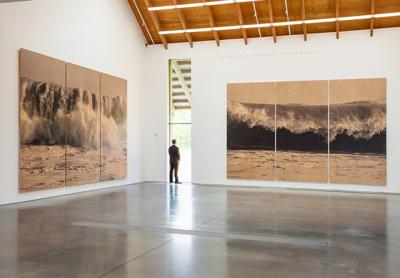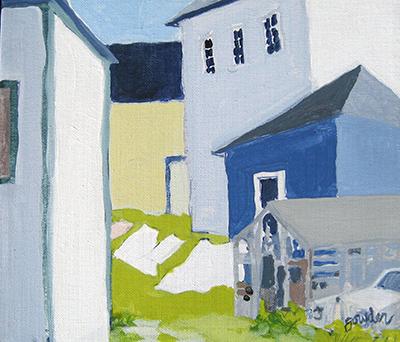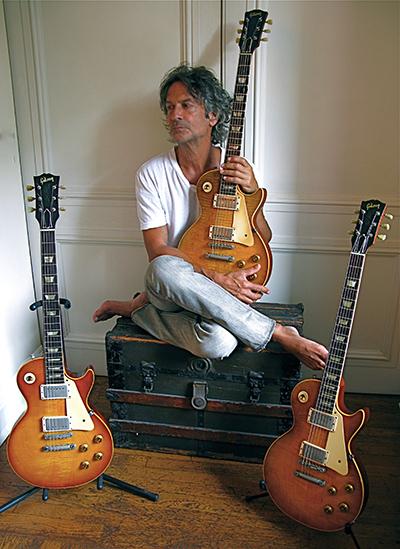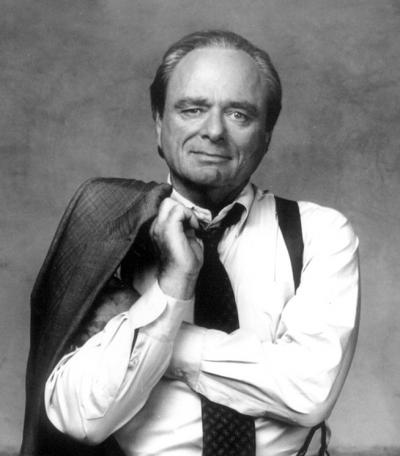9/11 Kids: Giving Their Pain a Purpose
9/11 Kids: Giving Their Pain a Purpose

Delaney Colaio was one of 3,051 young people who lost a parent on Sept. 11, 2001; she was 3 years old at the time. Now 18 and a freshman at Quinnipiac University in Hamden, Conn., she is a co-writer and co-director of “We Go Higher,” the first documentary by and about the surviving children of the 9/11 attacks.
Ms. Colaio, whose family has deep roots in Montauk, was inspired to pursue the project when she met Sara Bordo, an entertainment industry executive who founded Women Rising, an organization whose mission is to create content that empowers women and girls.
“After meeting Sara and seeing how she takes really tough social issues and turns them into positive stories, it inspired me. I had shared one of my own difficult experiences in a documentary for ProtectHer, a sexual assault curriculum founded by Sara and Alexis Jones, and that experience left me feeling I was finally able to give some of my pain a purpose.”
Around the same time, she was spending two months at home after her fourth concussion, suffered as a soccer player in high school, so she had an opportunity to think about the project. “I felt I wanted to give to 9/11 kids an opportunity to tell their stories in their own way.”
The crew recently finished its third month of filming and has interviewed 12 survivors. Now that Ms. Colaio is at Quinnipiac, the rest of the team will continue filming for several weeks.
“I wanted to figure out a way to incorporate anybody who was interested,” said Ms. Bordo, who is directing the film with Michael Campo. “We’re interviewing around 35 more kids the week of Sept. 11, when we’ll also be shooting a series of shorts. By the end we expect to have around 55 participants.”
The “We Go Higher” team partnered with Tuesday’s Children, a nonprofit formed after the attacks and dedicated to serving communities altered by acts of violence. “They helped us get the word out by email to their database,” said Ms. Colaio. “The 9/11 community is quite large, and people definitely talk a lot. We’re getting about 10 new kids a week. It’s incredible to see how many people want to be a part of this.”
While the age range of those interviewed is 16 to 52, there are many similarities among them, according to Ms. Colaio. “The one thing we didn’t know going in is that these kids all feel they don’t want their suffering to victimize them anymore. They want to be the people who are helping other people.”
“As 9/11 kids, the attention of the entire world was put on us and the families at that moment. The amount of love and support we got is insane compared to that of anybody else who loses someone. I think every one of these kids has dedicated some part of their lives to service because of the amount of support they received growing up.”
Ms. Colaio lost her father, Mark, and two uncles, Stephen Colaio and Thomas Pedicini, all of whom worked at Cantor Fitzgerald on the 104th floor of the North Tower. At one point, the Department of Justice asked members of the Colaio family if they wanted to provide a statement for the five men imprisoned at Guantanamo Bay for their planning of the attacks.
“Growing up, I would ask myself who these people were who took away my dad. Their punishment, if our ‘side’ won, would be the death penalty. After sitting with that in my stomach for a bit, I felt catalyzed to take action in a different way. I would never want to be part of something responsible for killing five people.”
“What kept resonating in my brain was that the difference between me and those people is that I was born in a different place. I feel bad for them, too. They were kids once. For me and the other 9/11 kids, this is not a politically driven project in any way, shape, or form.”
“These kinds of incidents keep happening, and will continue to, and the only thing you can control is your response. So the point of the film is to shed light on that, how to respond and grow, and to help people who are now going through what we went through 15 years ago.”
Victor Colaio, her grandfather who lost two sons, Mark and Stephen, said that he and Ms. Colaio’s mother discussed the project at great length before it was undertaken. “The entire family is fully supportive of my granddaughter, without a doubt. I’m very proud of her.”
Mr. Colaio first came to Montauk in 1984 and moved there permanently in 1994. Now 81, he has just begun a course in taxation at Villanova Law School. “I don’t know which is going to last longer,” he said, “me or the course. Taxation is my background. So I’m hoping to get something out of it. My wife passed away a couple of years ago, and there was such a void I had to do something mentally to get myself back again.”
Mark Colaio bought his house in Montauk before Delaney was born, and she has spent every summer there since. “Montauk has been my favorite place in the entire world, and it was my dad’s favorite place. It just means the world to me to be here. It’s a crazy house, there are like 20 teenagers who are all family members, all their parents, and we all come out here.”
Ms. Bordo hopes to have at least a rough cut of the feature wrapped by the end of the year for submission to film festivals. “TriBeCa is definitely our dream festival because it arose from the dark streets of Lower Manhattan, and we would feel very blessed and lucky to be a part of that in some way.”
On the evening of Sept. 10, the filmmakers will launch an Indiegogo crowdsourcing campaign to help raise money to complete the production. “Over the last couple of months we’ve realized how many people want to see these stories told,” Ms. Bordo said, “and it’s from the heartbeat of that community we have decided to do the campaign, so that anybody who wants to champion these kids and their stories can participate.”
More information and links to the campaign can be found at wegohigherfilm.com.






